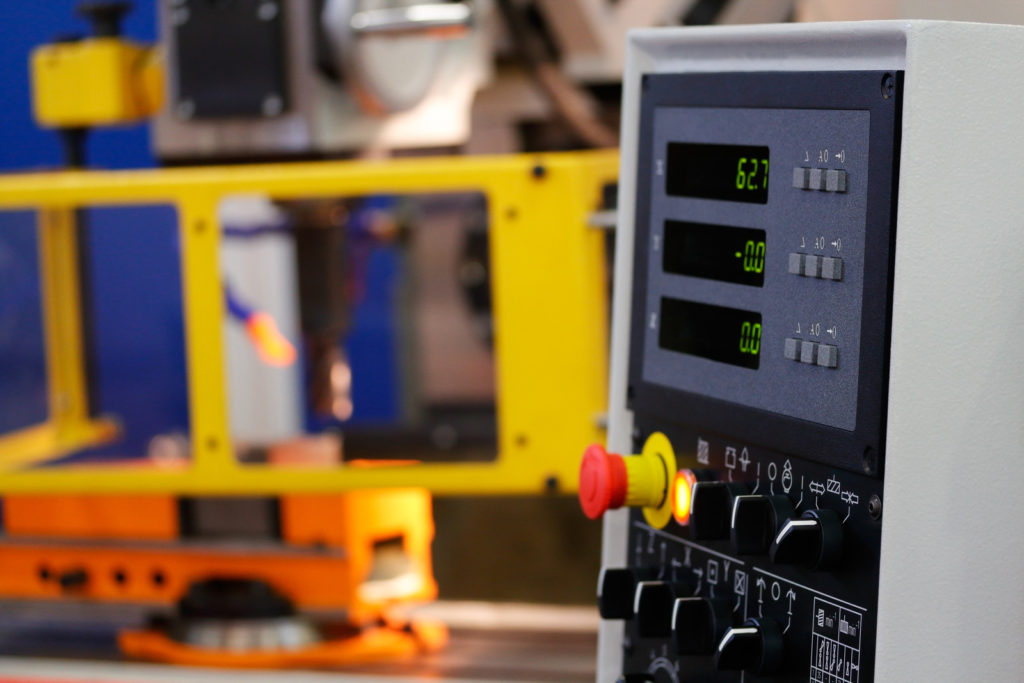With regard to machine engineering, it is hard to say that one segment has changed as rapidly over the years as the human machine interface (HMI). Born from the humble mechanical levers of the early 19th century to the fully digital computer controls we have today, machines have become more and more complex and the need for fully integrated, user friendly HMI’s has given birth to a wide variety of technologies. From touchscreens, to robotic teach pendants, industrial computers and everything in between, the HMI is an ever advancing product, which has an equally growing number of challenges when it comes to failure prevention.
But as its name suggests being “Human Machine Interface” is a dangerous job. No part of any piece of electronics life cycle is more perilous than any time it interacts with a human. The presence of a human operator presents a bevy of variables that are hard to predict from an engineering standpoint. That is why we have chosen to hone in on some of the specific human related HMI failures we see in the service center and how to prevent them.
Impact damage resulting from too many hard presses on a certain spot of the touchscreen.
When an operator gets frustrated he or she will have a tendency to hit the same spot on the screen as punctuation to that anger. Think back to how your space bar must have felt after that last angry email to your cable company. This leads to stress risers forming in the touch glass beneath. Eventually small micro fractures form in the glass and leads to a cracked screen. This in turn breaks the fine hair-like conductor that forms the touchscreen grid resulting in a loss of touch sensitivity to the area. At this point the touch screen must be replaced.
- Regularly train your team of operators on the proper way to operate the controls of any touchscreens they may interact with.
- Make sure any persistent software bugs, or machine errors are consistently dealt with in a timely manner as these things tend to frustrate the operator.
- Have inspection logs be kept between shifts to insure that if your HMI equipment is being damaged, the culprit is identified and can be coached on their proper use.
Wash downs procedures being performed incorrectly
Here is one that is aimed at our food and pharmaceutical customers especially. There is a right and a wrong way to perform wash-down procedures with your electrical equipment. When we see damage resulting from careless wash-downs, it is usually a result of an employee that forgot a few important steps. Even if a piece of electrical equipment is technically “wash-down rated” from the manufacturer this rarely means “water-proof” but rather “water resistant”. In fact many times in the service center we see the only difference in construction of wash-down HMI’s vs regular HMIs is one or two measly seals between the bezel and where they mount in the control cabinet. This is hardly enough to keep all water out and where you have water, you have rust. Eventually this corrosion will lead to trace failure, component failure and even shorted circuits as moisture crosses two conductors within the device.
- Make sure that your cleaning crew is overseen by someone from maintenance who will be able to direct them on the proper cleaning of electronic equipment.
- Make sure that before wash-down to read all equipment specifications and follow all related manufacturers guidelines for their upkeep.
- Make sure that equipment that must be bagged before cleaning is done with a tight seal. Do not break the seal until all moisture has dissipated from the area. Remember hot water tends to steam and that can be just as detrimental to electronics as direct water contact.
Touchscreen failures due to preventable wear
When trying to prevent what makes a touchscreen fail it is important to understand how a touchscreen is constructed. Generally speaking a touchscreen has just a couple of basic components. One is the touchglass itself which is a piece of glass that is covered in a grid of small conductors that create a vector that can detect where a user is pressing on the display. The second component is a thin layer of plastic called the overlay which protects the touchglass underneath and creates a barrier preventing any outside contaminant from traveling underneath. The PH from your fingers can eventually cause a tiny bit of corrosion which over-time can cause wear spots on the overlay. Once this wear moves past the overlay and on to the touchglass surface it can lead to a break in these fine conductors which causes an overall failure.
- Make sure that if the manufacture of the device provides a stylus for interacting with the screen that you use it. Make it part of your inspection checklists to insure your operators are using it. It may seem like an extra step to the machine operator but it can save you a lot of downtime.
- Make sure you use proper procedures for cleaning the touchscreen surface after every shift. This will not only remove any harmful acidic residue but also keep the screen sanitary for the next operator.
- If your processes involve any chemical, be sure to check the MSDS for that chemical for any possible interactions with plastics. If there are damaging interactions, take additional steps to prevent contact between the chemical and the touchscreen.
Of all the failure modes, the human factor can indeed seem the most difficult to control. But with a little reinforcement, knowhow and some advanced planning you can bring down the cost of having to replace your HMI’s and ultimately prevent costly downtime.

Oh my! I punch my iPhone screen! Maybe I shouldn’t.